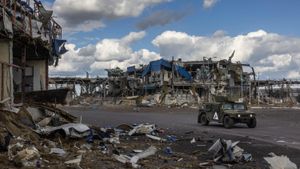Finland's education system has always been admired worldwide, with its unique approach to teaching and learning. But now, the Finnish School Network Reform is sparking heated debates among educators, policymakers, and parents alike. This significant reform aims to change the way schools are organized, potentially affecting students' education throughout the country.
At its core, the reform is about addressing the challenges posed by declining student populations, especially in rural areas. The government is considering the closure of many schools, which has caused anxiety among communities. The rationale behind this decision is to allocate resources more effectively and to provide students with access to higher-quality education, even if it means consolidations or closures.
Recently, the city council of Ylivieska held discussions on the school closure plans, drawing reactions from various stakeholders. Some council members argued passionately for preserving schools, emphasizing the importance of education being accessible to every child, regardless of geographical location. Others, meanwhile, argued for the need to concentrate resources on fewer schools, where they could offer more comprehensive services and extracurricular activities.
Nikita Mäkinen, one of Ylivieska’s council members, stated, "Education quality cannot be sacrificed, and we must adapt to the changing demographics of our population." This sentiment resonates with many as they grapple with the tough realities of Finland's educational environment, where student enrollments are falling, leaving some schools underpopulated and struggling financially.
These discussions aren’t isolated to Ylivieska. Across Finland, municipalities are weighing their options and making tough calls about school resources. While some school closures seem inevitable, parents and educators fear this might lead to longer travel times for students and the potential loss of community identity surrounding local schools. Schools are often community hubs, providing not just education but social connectivity.
Addressing the situation, several towns are proposing different solutions to balance efficiency with community needs. For example, some politicians have suggested forming cooperative schools, where two or more schools share resources and staff to maximize educational offerings. This blend could allow children to benefit from the facilities and staff of larger institutions without the long commutes.
The pre-existing system, with its roots deeply set over decades, also plays a role in these discussions. There’s considerable resistance against reform from those who believe the current educational model has effectively cultivated Finland's high performance levels internationally. Critics argue it is not the school network's organization but rather investment and support structures around schools that's needed.
Parents' concerns have grown louder, especially among those who are attached to their local schools. Many feel overwhelmed by the notion of their beloved institutions closing. Emilia Virtanen, whose child is currently enrolled at one of Ylivieska's smaller schools, expressed her fears: "This school is not just where my child learns; it's where they have friends, safety, and community. Any change feels like it threatens all of this."
This emotional connection highlights the delicate balance policymakers need to find as they implement reforms. Stakeholders stress the importance of open dialogue and engaging with the community when proposing drastic changes like school closures. Local governments are now invited to create forums, engaging families and teachers to voice their opinions and experiences. There are hopes these measures will lead to compromises, where financial sustainability can meet community wishes.
Meanwhile, educators express concerns about the potential quality of education if schools close or merge. They worry smaller schools, known for their individualized attention, might lose out on part of what makes their teaching special – personalized curriculum adaptations crafted for varied learning styles.
The changing global climate of education where digital classrooms and remote learning are more prevalent also adds another layer of complexity. Schools now have to find ways to innovate, integrate technology effectively, and provide equal opportunities, which only emphasizes the need for resources.
With many factors at play, Finland's school network reform highlights the multifaceted nature of educational policy. It is about balancing costs with benefits, preserving community values with educational innovation, and ensuring every child still has the chance to succeed, no matter the geography. While passionate discussions about the future of schools continue, the people of Finland remain hopeful they can preserve the essence of their cherished education system, adapting to meet contemporary challenges, yet holding on to what has made them successful.
Reform efforts are set to ramp up as the discourse shifts to tangible plans moving forward. For now, the future of many Finnish schools hangs delicately as discussions reach out to involve every corner of society; teachers, parents, and students are beginning to unite for community-centered solutions.



